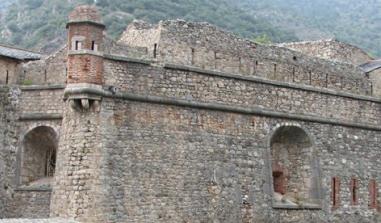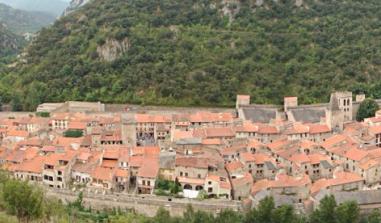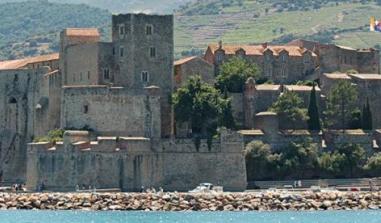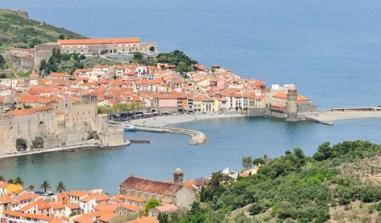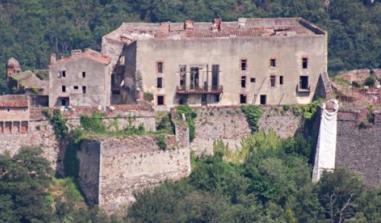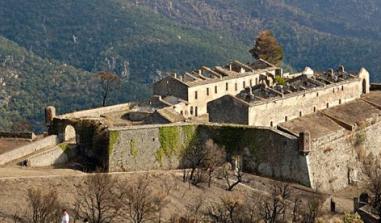Salses Castle
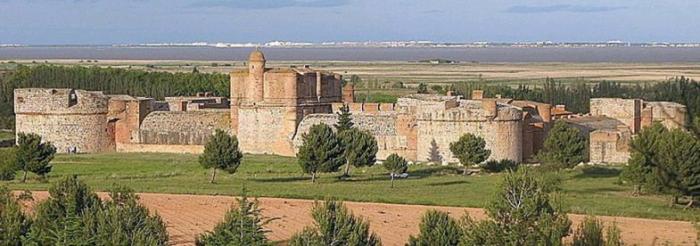
Le château de Salses. Source : http://www.leguide66.com/
Château de Salses sits between two natural obstacles, the foothills of the Corbières Mountains and the seaside ponds.
In the Pyrénées Orientales département, the gateway to Catalonia, Château de Salses sits between two natural obstacles: the foothills of the Corbières Mountains and the seaside ponds.
By order of Ferdinand the Catholic, King of Aragon, the fortress was built between 1497 and 1504 by Commander Ramiro Lopez, the King’s Grand Artilleryman, to block France’s access to Roussillon. Given its strategic location on a natural border, it was destined to see combat and came under siege in 1503, before it was even finished. Taken and retaken during the Franco-Spanish campaigns, Château de Salses, along with Roussillon, definitively became part of the Kingdom of France with the Treaty of the Pyrenees in 1659.
As it then lay far from the border, it had less strategic interest and the only reason it was not destroyed was that it would have cost too much. The fortress was later used as an army barracks for transiting troops, then as a storehouse for food and ammunition. Classified as a historical monument in 1886, it was handed over to the Ministry of Culture in 1930, which restored it and opened it to the public.
Château de Salses has many of the attributes of a medieval castle. It has kept the round stone towers at the ends of the long, continuous curtain walls, and has a keep to hold the fortress’s vital reserves: the arsenal and food stocks. And yet, notably after the adjustments made after the first siege in 1503, it should be considered as a transitional building, the forerunner of the bastion.
At the end of the 15th century, the development of metal cannonballs required changes to the military fortification. Indeed, the medieval castle, which could resist fragile stone cannonballs, became vulnerable with the appearance of cast iron cannonballs.
Château de Salses illustrates the architectural solutions developed to deal with the devastating effects of metal cannonballs. To avoid enemy fire as much as possible, the fortification’s defences are deeply embedded in the ground, sheltered deep in the ditch. To the southwest and northwest of the fortress, two promontories set in front of the circular constructions seek to keep the enemy at a distance by eliminating blind spots: they were the precursors to the geometrical shapes of modern bastions. Attacks on the fortress itself are delayed by the external works; the curtain walls are no longer crenellated and now have cannon embrasures. Characterised by its thick walls, wide moats, imposing external works, artillery installations on wide platforms, Château de Salses illustrates the necessary adaptation of military architecture to developments in the art of warfare.
Salses Fortress
66600 SALSES-LE-CHÂTEAU.
tel.: +33 (0)4 68 38 60 13.
fax: +33 (0)4 68 38 69 85.
Open: from 1 June to 30 September, from 9 am to 7 pm. From 1 October to 31 May, from 10 am to 12.15 pm and from 2 pm to 5 pm.
Closed on 1 January, 1 May, 1 November, 11 November and 25 December.
Permanent exhibition. Free visits of the exterior. Guided tours of the fortress.
Access from Béziers: on the A9 motorway toward Perpignan, take exit No. 40, then the D 627 and N 9 roads toward Perpignan. From Perpignan: take the N 9 toward Narbonne.
Partially accessible to disabled visitors.
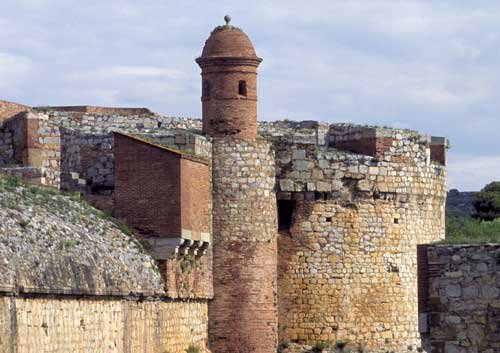
Chateau de Salses. Photo ECPAd
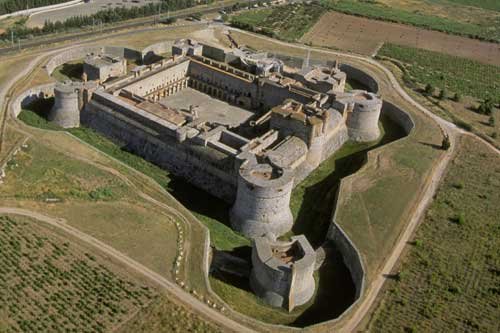
Chateau de Salses. Photo ECPAd
Practical information
66600
Salses-le-Château
tél. 04 68 38 60 13.Fax. 04 68 38 69 85.
Du 1er juin au 30 septembre de 9h à 19 h. Du 1er octobre au 31 mai de 10h à 12h15 et de 14h à 17h. Visites libres des extérieurs. Visites commentées de la forteresse.
Fermé les 1er janvier, 1er mai, 1er novembre, 11 novembre et 25 décembre.


